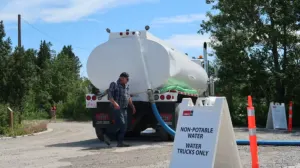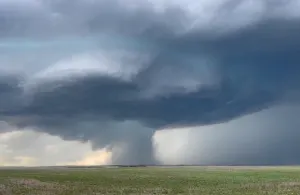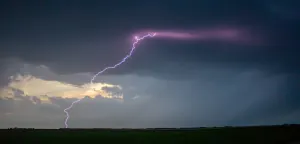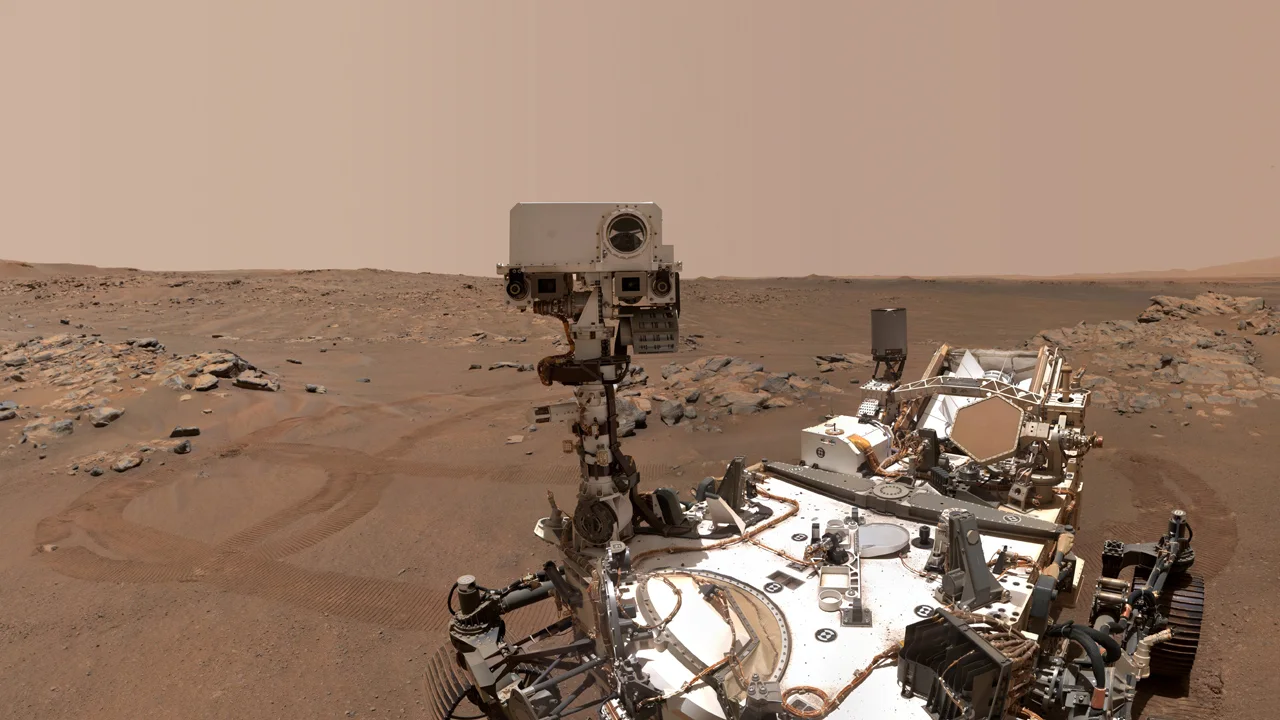
Perseverance rover sets new driving record to celebrate 1st year on Mars
Letting Perseverance 'take the wheel' has allowed the rover to drive farther and faster as it searches for signs of ancient life on Mars.
NASA's Perseverance rover marked its first 'landiversary' this week. To mark the occasion, the rover set a new offworld record by performing its farthest autonomous drive ever.
When the Perseverance rover landed in Jezero crater on Mars on February 18, 2021, there were high hopes and high expectations for the mission. After exploring for a full Earth-year, the rover has sent back over 215,000 images (with more coming in nearly every day), it has drilled and collected six rock samples that will eventually be sent to Earth, it extracted pure oxygen from the Martian atmosphere, and it dropped off the Ingenuity helicopter for flight tests and operations. Additionally, as of February 16, 2022 (or Sol 354 of the mission) Perseverance has driven a total of 3,840 metres.
Now, rovers rove. That's what they're designed to do. So, driving nearly 4 kilometres in a year may not seem like a reason to celebrate. However, Perseverance is special. By taking images and analyzing them 'on the fly' the rover's AutoNav function generates 3D terrain maps that let Perseverance drive itself over significant distances. The only guidance provided by the mission team on Earth is the next location they'd like the rover to drive to.
Perseverance's first autonomous drive was back on July 1, 2021. It reached a record distance of 120 metres.
Watch below: Perseverance's Navcams recorded the rover's first autonomous drive on Mars.
On the rover's 200th Sol (Sept. 12, 2021), it auto-drove a total of 167 metres, setting a new personal best.
According to the rover's team at JPL: "In total, the rover drove 574 feet (175 meters). The first 26 feet (8 meters) were based on commands sent up earlier by rover drivers, allowing Perseverance to build a 3D map of the terrain under and around it. This map allows the AutoNav function to assess the safety of available paths at the rover's location; engineers call this "crawling on to the map." Once AutoNav takes over, the rover autonomously chooses a path to reach the intended destination, continually imaging around itself to maintain a 98-foot-by-98-foot (30-meter-by-30-meter) map centered on the rover."
Most recently, the rover made two more record-breaking drives in early February (Sols 340 and 341). The team said that these drives, which covered 243.3 m and 226.5 m, set the records for the longest single-sol total distance recorded by any martian rover, and the single-sol Autonav record by any martian rover, respectively.
Then, on February 14, 2022, Perseverance drove a total of 320 metres, all on its own. That's a new personal best for both distance in a single sol and distance driven with autonavigation!
According to Jennifer Trosper, the Mars 2020 Project Manager at NASA's Jet Propulsion Laboratory, Perseverance accomplished these feats of driving because the rover is, in essence, capable of thinking for itself.
The same technology that allowed Perseverance to analyze the images it took during landing, to find a safe place to set down, now processes the stereo images the rover takes of its surroundings.
Perseverance's two navigational cameras, which are mounted on its mast, are set up in such a way that the rover basically has binocular vision, like humans do. So, by comparing the images taken by the left and right cameras, it gives the rover depth perception, and this allows it to avoid obstacles more easily.
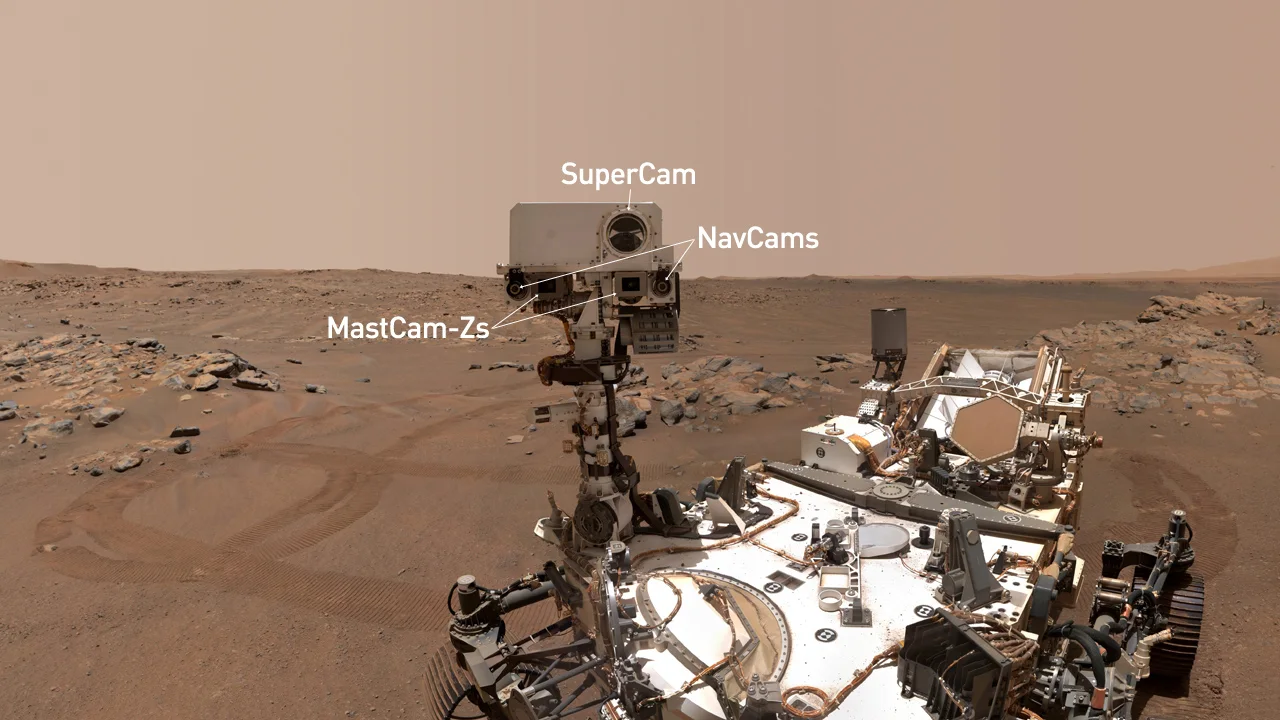
Perseverance's selfie at Rochette, the rock where the rover obtained its first successful sample. Labelled are the cameras on the rover's 'head', the SuperCam Remote Microimager, the MastCam-Zs which take colour hi-res images and movies, and the rover's navigational cameras (NavCams). Credit: NASA/JPL-Caltech/MSSS
Perseverance's AutoNav function doesn't only help with distance driven per sol. Since the rover can evaluate its surroundings far better than the team on Earth could ever do, handing over navigation to the rover itself allows it to drive faster.
In a JPL public talk on February 17, Trosper said that previous rovers, like Curiosity and Opportunity, were only able to drive at speeds of less than 25 metres per hour.
"What we've been able to do so far on Perseverance is drive about 100 metres per hour," she said. "So, we've quadrupled our rate of traverse, while we're in this autonomous mode."







